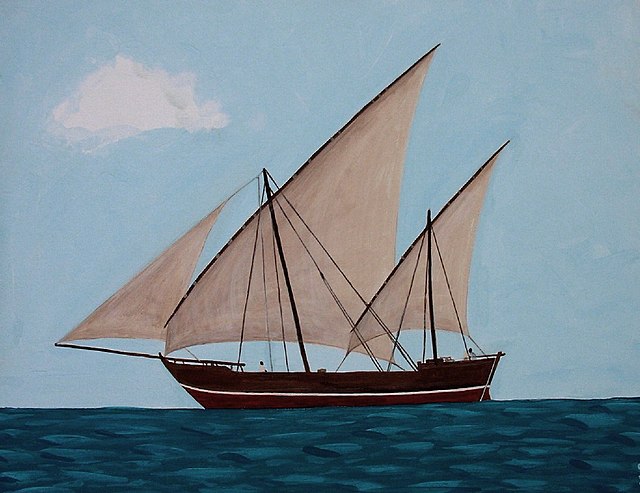The caravel is a small maneuverable sailing ship used in the 15th century by the Portuguese to explore along the West African coast and into the Atlantic Ocean and by Columbus on his expeditions of exploration of the Americas. They used both lateen and square sails and were known for their agility and speed and their capacity for sailing windward (beating) with their lateen sails. Caravels were used by the Portuguese and Spanish for the voyages of exploration during the 15th and 16th centuries, in the Age of Discovery.
Model of a Portuguese caravel, found in the Musée national de la Marine
What is believed to be the most accurate depiction of a lateen caravel, featured in the 16th century Retábulo de Santa Auta, now at the National Museum of Ancient Art, in Lisbon
A replica of the caravel Boa Esperança in the city of Lagos, Portugal
A typical square-rigged caravel (Livro das Armadas)
A lateen or latin-rig is a triangular sail set on a long yard mounted at an angle on the mast, and running in a fore-and-aft direction. The settee can be considered to be an associated type of the same overall category of sail.
Byzantine ship rigged with settee sail (miniature from c. 880)
Dhow with lateen sail in "bad tack" with the sail pressing against the mast, in Mozambique.
A large dhow with two settee sail rigs and a headsail.
The Bracera: a traditional lateen-rigged sailboat of the Mediterranean.








